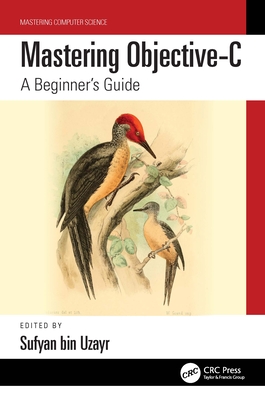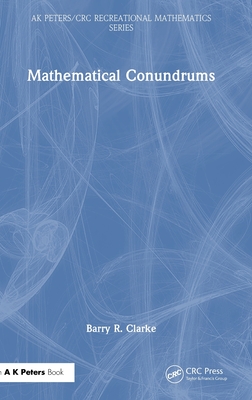图书简介
Lagoons and estuaries are transition spaces between earth and sea. Beyond their expanse, geographic repartition, geomorphological, hydroclimatic and ecobiological diversity and biodiversity, they play an important role in regional economies and are some of the ecosystems most vulnerable to global change. Reinforced by numerous references, this book studies Mediterranean lagoonal and estuarine fishes whose diversity largely depends on the composition of neighboring marine and continental ichtyofauna. The authors describe their morphological, biological, ecological and behavioral characteristics by evoking their distinctive features and differences with their marine or freshwater homologues. Their adaptation strategies, elucidated thanks to recent advances in morphology, genetics and molecular biology, are recognized as a major advantage in the context of climate change. This book is for natural environment managers, engineers, teachers, students and researchers.
Foreword ix Preface xi Introduction xiii Chapter 1. Mediterranean Lagoons and Estuaries 1 1.1. What is a lagoon and what is an estuary? 2 1.2. Lagoons and estuaries of the Mediterranean: characteristics,inventory and classification 8 1.3. Some recurrent preconceived ideas and problems concerning lagoons 14 1.4. Geological, geographic and physicochemical types of lagoon 15 1.4.1. According to their geological origin 15 1.4.2. According to their connections with the sea 16 1.4.3. According to their physical chemistry 17 1.4.4. According to their haline system 17 1.4.5. According to their nutrient content 18 1.4.6. According to their geographic position and connection with the sea 19 1.5. Lagoon hydroclimate and hydrodynamics 19 1.6. Some features of lagoon ichthyoecobiology 21 1.7. Production in lagoons and trophic chains 26 1.8. Lagoon habitats 30 Chapter 2. Ecology and Behavior 33 2.1. Origin and originality 38 2.2. Ecology and behavior 43 2.2.1. Sedentaries 44 2.2.2. Migrators 47 2.2.3. Intermittent residents 50 2.3. Sea-lagoon/lagoon-sea fish interaction: the phenology of migrations 51 2.3.1. Inmigration 51 2.3.2. Outmigrations 55 2.4. Ecological valence 58 2.5. Lagoons and invasions: the presence of exotic species 59 2.6. Structure of fish assemblages 62 2.6.1. Natural factors in spatiotemporal distribution 63 2.6.2. Assemblages and anthropization 66 2.6.3. Utilization of ichthyological indicators 69 Chapter 3. Biology and Genetics 71 3.1. Sexuality 72 3.2. Reproduction 77 3.2.1. Nest building, gestation and fecundity 78 3.2.2. Reproductive success and gamete management 82 3.2.3. Reproductive particularities in Blenniidae, Gobiidae and Labridae 85 3.2.4. Reproductive particularities in Syngnathidae 86 3.2.5. Other aspects of nest building and parental care 93 3.2.6. Other aspects of reproduction in migrators 104 3.3. Feeding and energy transfer 105 3.3.1. Alimentary guilds and competition 105 3.3.2. Cannibalism 107 3.3.3. Feeding behavior 108 3.4. Age and growth 112 3.5. Intra- and interspecific communication 118 3.5.1. Visual functions 119 3.5.2. The olfactory functions 121 3.5.3. Auditive and mechanoreceptive functions 123 3.6. Ecological genetics 126 3.6.1. Sedentary species 126 3.6.2. Migratory species 129 3.6.3. Other structural factors 130 Chapter 4. Fisheries and Aquaculture 137 4.1. Fishing in lagoons 138 4.1.1. Advantages of lagoons for fisheries 138 4.1.2. Fishing methods and techniques 140 4.1.3. Fisheries production and yield 152 4.1.4. Interaction between marine and lagoon fisheries 161 4.2. Aquaculture in lagoons 163 4.3. Fisheries-aquaculture interactions in the lagoons 166 Chapter 5. Anthropization and Climate Change 169 5.1. Threats to lagoon and estuarine systems and their ichthyological populations 169 5.2. On the need for an integrated approach to lagoon ichthyology 179 5.3. Toward a best knowledge of lagoons: the contribution of the Mediterranean \"lagoon-estuarine networks\" 180 Appendix 183 Glossary 191 References 199 Index of Scientific Names and Common Words 257 Index by Country: Lagoons, Lakes, Ponds, Delta and Estuaries 263
Trade Policy 买家须知
- 关于产品:
- ● 正版保障:本网站隶属于中国国际图书贸易集团公司,确保所有图书都是100%正版。
- ● 环保纸张:进口图书大多使用的都是环保轻型张,颜色偏黄,重量比较轻。
- ● 毛边版:即书翻页的地方,故意做成了参差不齐的样子,一般为精装版,更具收藏价值。
关于退换货:- 由于预订产品的特殊性,采购订单正式发订后,买方不得无故取消全部或部分产品的订购。
- 由于进口图书的特殊性,发生以下情况的,请直接拒收货物,由快递返回:
- ● 外包装破损/发错货/少发货/图书外观破损/图书配件不全(例如:光盘等)
并请在工作日通过电话400-008-1110联系我们。
- 签收后,如发生以下情况,请在签收后的5个工作日内联系客服办理退换货:
- ● 缺页/错页/错印/脱线
关于发货时间:- 一般情况下:
- ●【现货】 下单后48小时内由北京(库房)发出快递。
- ●【预订】【预售】下单后国外发货,到货时间预计5-8周左右,店铺默认中通快递,如需顺丰快递邮费到付。
- ● 需要开具发票的客户,发货时间可能在上述基础上再延后1-2个工作日(紧急发票需求,请联系010-68433105/3213);
- ● 如遇其他特殊原因,对发货时间有影响的,我们会第一时间在网站公告,敬请留意。
关于到货时间:- 由于进口图书入境入库后,都是委托第三方快递发货,所以我们只能保证在规定时间内发出,但无法为您保证确切的到货时间。
- ● 主要城市一般2-4天
- ● 偏远地区一般4-7天
关于接听咨询电话的时间:- 010-68433105/3213正常接听咨询电话的时间为:周一至周五上午8:30~下午5:00,周六、日及法定节假日休息,将无法接听来电,敬请谅解。
- 其它时间您也可以通过邮件联系我们:customer@readgo.cn,工作日会优先处理。
关于快递:- ● 已付款订单:主要由中通、宅急送负责派送,订单进度查询请拨打010-68433105/3213。
本书暂无推荐
本书暂无推荐














